Review Article - (2022) Volume 4, Issue 4
Poor diet is a major risk factor for cancer, which has become the world's second leading cause of death. As the world's population has aged, the likelihood of age-related chronic diseases such as cancer has increased. Hence, greater emphasis should be laid on reducing levels of smoking, improving diet, and increasing physical activities in the general population's health and the healthcare system. In ancient times, dietary agents derived from plants served as a source of scientific guidance; therefore, it is crucial to examine plant extracts for modern-day ailments as well. Consumption of fruits and vegetables as part of a healthy diet has been linked to cancer prevention. Both nutritive and non-nutritive phytoextracts are modulators of key cellular signaling pathways, resulting in anti-cancer effects. In some cases, extracts and in some, purified components i.e., bioactive compounds, exhibit effects such as cell cycle arrest, apoptosis, inhibition of proliferation and metastasis, and inhibition of angiogenesis. These active components show varying effects in different cancer cells. While some components may be extraordinarily efficient against a particular type of cancer, others may not be as beneficial. The focus of this review is on the bioactive components of specific plant-based foods that affect the development and spread of cancer by acting on pathways related to cell proliferation and metastasis. The underlying mechanisms of the bioactive components' actions as well as their effects on various types of cancer have been discussed.
Cancer • Phytoextracts • Signalling-pathways • Chemoprevention • Initiation and progression • Apoptosis • Metastasis • Angiogenesis
Cancer, despite being a curative disease, when diagnosed and treated properly, remains a heavy global burden. It has been one of the leading causes of premature death in approximately 134 countries, including the United States, Argentina, the United Kingdom, France, Australia, and Thailand. Among the various types of cancer, lung cancer remains the most common type of cancer worldwide with 2.1 million new cases and 1.8 million deaths reported in 2018. Tobacco use is responsible for 63% of all lung cancer deaths worldwide. Breast cancer has been one of the most frequently diagnosed cancers in women, with 2.1 million new cases and 627000 deaths globally in the year 2018 [1]. The main cause of this increasing rate of breast cancer is attributed to changing lifestyles, obesity, and consumption of alcohol by women. Thus it becomes really important to keep a crosscheck on our day-to-day activities and adopt a healthy diet with a routine including some form of physical exercise. World cancer report 2020 by WHO, mainly focusing on six types of cancer revealed that apart from lung cancer and breast cancer, 880000 deaths were due to colorectal Cancer, 783000 deaths due to stomach cancer with poor survival rates and 360000 deaths due to prostate cancer were reported globally in the year 2018 alone. 570000 new cases were reported of cervical cancer with 311000 deaths in 2018. Though there are several treatments available for curing the ailment, none of them guarantee a full cure and even come with many side effects. For example, drugs used in chemotherapy to treat breast cancer come up with some kind of cardiotoxicity, which means that the damage once done to the heart is irreversible and may often lead to heart failure. Drug resistance also serves as a problem in the long run as it can lead to a compromised immune system and prolonged illness. Thus, there is an urgent need to find a cure for this disease that is cost-effective and comes up with no or minimal side effects and helps overcome drug resistance.
Looking back at the pages of Indian history, we find plenty of stories and texts which talk about curing ailments by using plant products. For example, Atharva Veda contains information about curing various diseases. Even Ayurveda considered a subdivision of Atharva Veda, contains information about procedures for living a long and healthy life and various drug therapies based solely on plant products and their extracts. This process of curing diseases with the use of plants and their extracts is termed “Aushadha therapy” and there are about a hundred and seven types of plant species mentioned that can be used to perform the therapy by properly planned and rational use. For example, Soma is termed the chief of all medicinal plants. Apamarga (Achyranthes aspera), a medicinal plant of the Himalayas is reported with its use in relieving cough, piles, itching, and abdominal pain in Atharvaveda. Shatavara (Asparagus racemosus Wild.) is cited for its usefulness in treating malignant diseases of the skin such as ulcers. Some of the herbs commonly used in the ayurvedic anticancer treatment are Vitis vinifera, and are proven to have chemopreventive activity. Barleria priontis is used for external application during acute stages of cysts in blood vessels. Combining the information from our history books with modern technology can be one of the methods to find a better cure for this disease. For preventing and curing cancer efficiently, we can see this disease from a Vedic perspective to explore putative plants with anticancer activity. This review thus focuses on plant parts and phytoextracts to prevent and cure cancer with a special focus on Allium (Garlic & Onion), Moringa, Bitter melon, Pomegranate, Tomato, Tulsi, Green Tea, Amla, Spices like Turmeric, Clove, Ginger, Cinnamon, Saffron, Black Pepper, and Black cumin seeds.
The Latin word for garlic is Allium. About 500 species including edible onions, garlic, chives, leeks, and shallots are included in this genus which is usually referred to as the onion family and are monocots. Edible bulbs of garlic (A. sativum) and onion and leaves of onions (A. cepa) have a lot of therapeutic as well as culinary uses. Shallots are less pungent in flavour than onions and are commonly used in cooked dishes or pickled. Chives are characterized by their edible green scapes with mild onion flavour. Leeks have edible leaf sheaths with mild onion flavour. Onions are typically consumed in larger quantities than garlic, chives, shallots, or leeks, however, the consumption patterns vary widely.
Vegetables of this genus contain almost similar amounts of nutrients; however, garlic has an abundance of many minerals. Many bioactive compounds like flavonoids, oligosaccharides, arginine, and selenium are found in allium vegetables however, a lot of Allium’s medical benefits and research studies align with their sulfur-containing components which give them their characteristic flavours and odours. Roughly 1% of garlic’s dry weight and 0.5% of onion is sulfur. γ-glutamyl-S-alk(en)yl-L-cysteines and S-Alk(En)Yl-L-Cysteine Sulfoxides (ASCOs) are the precursors from which sulfur-containing components in garlic and onions are derived. The major ASCO found in garlic is Alliin (S-allylcysteine sulfoxide) and in onions is isoalliin (Trans-(+)-S-(propen-1-yl)-L-cysteine sulfoxide) [2]. Vacuoles of the cells on cutting or crushing the vegetable bulbs release an enzyme called alliinase which is of ASCOs to sulfenic acid intermediates which are very reactive. These intermediates, via condensation reactions, rapidly produce thiosulfinate compounds. Allicin (thio-2-propene-1sulfinic acid S-allyl ester) is the major garlic thiosulfinate produced. Garlic’s characteristic odour comes from Allicin and its oil-soluble metabolites. It breaks to ajoene, vinyldithiins, and sulfides like Diallyl Sulfide (DAS), Diallyl Disulfide (DADS), and Diallyl Trisulfide (DATS). The cleavage of isoalliin and the succeeding condensation of the sulfenic acid intermediates in onions results in the generation of lachrymatory factor (thiopropanal S-oxide). Allicin, however, is unstable and converts readily into mono-, di-, tri-, and polysulfides, sulfur oxide, and other compounds such as ajoene (Figure 1).
Figure 1: Structures of bioactive compounds (a) Aliicin, (b) Alliin, and (c) Isoallin obtained from onion and garlic.
Effects of the potentially chemopreventive compounds from garlic on carcinogenic mechanisms:
Initiation: Preventing the formation of carcinogens from precursors, increasing the level of the enzymes involved (e.g. glutathione S-transferase) for increasing the detoxification of carcinogens, blocking the metabolic activation of carcinogens, interception of carcinogens before their reaction with DNA, stimulation of error-free DNA repair or inhibition of cell proliferation is how initiation might be inhibited by ASCOs [3].
Inhibition of heterocyclic amines and nitrosamines
Heterocyclic Amines (HCA) and nitrosamines are said to be carcinogens found in food products that are not normally present but may be formed during cooking or preservation. Data collected from studies point to the aptitude of allyl sulfur compounds to inhibit the formation of nitrosamines, though all allyl sulfur compounds do not prevent nitrosamine formation equally. SAC (Sulfur-allyl cysteine) and S-propyl cysteine reduced nitrosamine formation, indicating the role of a cysteine residue in the inhibition of the formation of HCA and nitrosamines. However,DADS, dipropyl disulfide, or DAS did not point towards any such activity.
DADS, DATS, and ajoene have the attribute of inhibiting the proliferation of an extensive range of cancer cells by decelerating cell cycle progression and inducing apoptosis. The action of garlic and onion constituents on cell cycle arrest, including reduced Cdk1/cyclin B kinase activity, has been explained by various mechanisms [4]. Analysis of gene expression also indicated that on DADS treatment, changes in the DNA repair system may be involved in the G2/M phase arrest.
The interrelation between a higher diet content of onions and/or garlic and dwindled threat of certain cancers is indicated by epidemiological studies. However, the data are limited and sometimes conflicting. The most approved epidemiological data points towards the beneficial actions of garlic and/or onions on different cancers of the GI tract.
Effects of bioactive compounds derived from Allium vegetables on different types of cancers:
Stomach cancer: In a meta-analysis that investigated Allium vegetables (Onions and garlic) and stomach cancer, conducted by The World Cancer Research Fund/American Institute for Cancer Research (WCRF/AICR), it was found that a cancer-deterrent relationship between Allium vegetables was likely due to consistent evidence along with the dose-response relationship.
Colorectal cancer: In combined research of Italian and Swiss case-control studies, the diet content of onions and garlic was evaluated singly with the help of a food frequency questionnaire. It was revealed from the data obtained that both onions and garlic were precautionary against cancers of the large intestine. The amount of onion ingestion was associated with a declined risk of cancer as compared to non-consumers of onion.
Esophageal cancer: Reported that intake of raw garlic/onion at least one time per week resulted in a decreased risk of esophageal cancer. The Italian and Swiss case-control study communicated that intake of onions frequently in a week or every alternate day helped prevent esophageal cancer.
Prostate cancer: In a case-control study in Shanghai, it was reported that individuals who had a high intake of allium vegetables had a reduced risk of prostate cancer than those with a low intake. Both garlic and scallion were related to abated risks.
Other cancer sites: The Italian and Swiss case-control studies reported other links between onions or garlic and cancers of the buccal cavity, nephrons, mammary glands, ovary, and endometrium. It was found that there was a trend of decreasing odds with increased intake of allium vegetables [4].
Moringa (Moringa oleifera Lam.) belongs to the Moringaceae family and is a cruciferous plant. It is called a drumstick tree or horseradish tree in vernacular languages. M. oleifera is considered a part of the human diet due to its nutritional values and vast medical benefits. Betacarotene, vitamin C and E, and numerous polyphenols and antioxidants are present in abundance in its leaves. M. oleifera is reported to possess a myriad of health benefits and inflammation inhibitory, anti-neoplastic, hepatoprotective, and neuroprotective functions. Its therapeutic values include anti-diabetes, anti-rheumatoid arthritis, anti-atherosclerosis, anti-infertility, analgesic, anti-depression, diuretic, and thyroid-regulating properties. It is also used for its antimicrobial activity (Figure 2).
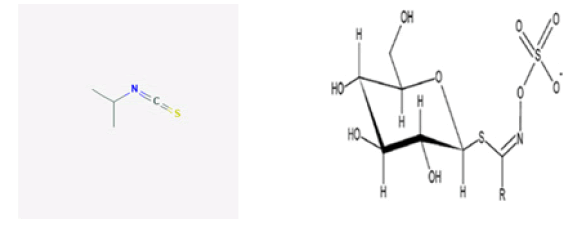
Figure 2: Structures of bioactive compounds (a) Isopropyl-isothiocynate, (b) Glucosinolate obtained from M. oleifera.
Anticancer Property of M. oleifera: Data reports that M. oleifera leaf and bark extracts hamper the growth of breast, pancreatic and colorectal cancer cells. Isothiocyanates are anticancer compounds that are naturally present in their precursor form, glucosinolates, in an undamaged moringa plant. Hydrolysation of these glucosinolates produces isothiocyanates when the plant is cut or crushed. Allyl Isothiocyanates (AITC) have been reported to inhibit the growth of androgen-dependent (LNCaP) human prostate cancer cells and androgen-independent (PC-3) [5]. A 43% reduction in tumor growth was seen after treatment of mice with BxPC-3 tumor xenografts with Benzyl Isothiocyanates (BITC) by Boreddy and colleagues.
Effects of bioactive obtained from M. oleifera on various mechanisms of carcinogenesis:
Regulation of cell proliferation: Studies have confirmed that M. oleifera has the potential for selective inhibition of the proliferation of different cell lines like human Hepatocellular Carcinoma (HepG2), lung cancer (A549), breast cancer (MDA-MB-231), and colon cancer (HCT-8) cells. Also, the leaf extract of M. oleifera demonstrates its anti-proliferative action on KB cells which is assessed by the changes seen in cellular morphology, cell viability, and internucleosomal DNA fragmentation.
Cell cycle arrest and apoptosis: Studies have reported that along with the ability to inhibit the proliferation of cancer cells, apoptosis can be induced in different cancer cells by isothiocyanates procured from M. oleifera leaf, which makes it a potent source of anti-cancer drugs. During the application of M. oleifera, apoptosis involves many signalling pathways related to caspase signalling. Downregulation of caspase-3 and upregulation of cleaved caspase-3 upon the administration of M. oleifera leaf extract in a dose-dependent manner have been reported. Bioactive compounds found in leaf and bark extracts of M. oleifera, such as eugenol, isothiocynates, D-allose, and various esters obtained are known to surge apoptosis in breast and colorectal cancer cell lines and effectively halt cell cycle progression at the G2/M phase [6].
Synergistic effect on chemotherapeutic drugs: The resistance developed by an individual to chemotherapeutic drugs is called Multidrug Resistance (MDR) and it leads to a decreased treatment efficacy and cancer recurrence hence is a major concern over the failure of chemotherapy. Compounds obtained from phytoextracts have become the focus of anticancer studies because of their traits like reduced toxicity, negligible side effects as well as immune-modulatory functions. Data from various studies have revealed that, by apoptotic inhibition, doxorubicin, a drug extensively used in chemotherapy to inhibit DNA replication, when administered along with M. oleifera callus and leaf extracts leads to complete growth inhibition of HeLa cells [7]. So the combination of M. oleifera with currently used anticancer drugs could be a novel adjuvant therapy for cancers.
Bitter melon, Momordica charantia, belongs to the family Cucurbitaceae. It is a climber that bears fruits oblong in shape. The young fruits are emerald green in color while the ripe ones are orange-yellow [8]. Its cultivation is done as a vegetable but is used as folk medicine too. It has been used for its numerous health benefits including anti-diabetic effects, abortifacient, anthelmintic, contraceptive, and gout, kidney-stone traditionally. A higher rate of consumption of bitter melon has been seen in many countries due to various studies demonstrating its ability to target obesity/type II diabetes-associated metabolic disorders. While the exact mechanism of glucose level reduction is not yet known, various studies have proved that bitter melon inhibits intestinal glucose uptake, stimulates glucose utilization in peripheral skeletal muscles, and suppresses gluconeogenic enzymes, hence causing hypoglycemia. Currently, bitter melon is researched for its anti-neoplastic properties against many cancers.
An abundance of vitamins like C, A, E, B1, B2, B3, and B9 as folate, minerals like potassium, calcium, zinc, magnesium, phosphorous and iron, glycosides, alkaloids, saponins, oils, terpenes, proteins, and steroids are found in M. charantia fruit. Momordicosides K and L, and momordicines I and II are responsible for imparting bitterness to the fruit. The presence of cucurbitane-type triterpenoids was also reported which were procured from the methanolic extract of this fruit by Akihisa and group. The same extract was tested for its ability to check DNA polymerase (pol) action by Mizushina and the group [9]. It was reported that Monogalactosyl Diacylglycerol (MGDG), a glycoglycerolipid, containing two α-linolenic acids was isolated and identified as a potent and selective inhibitor of mammalian polymerase species such as α, γ, δ, and ε sub-types. Growth inhibition of A549 lung cancer cells, HCT116 colon cancer cells, HeLa cervix cancer cells, and NUGC-3 stomach cancer cells was also seen by the administration of isolated MDGD (Figure 3).
Anti-cancer effects of bitter melon on a few types of cancers:
Skin cancer: It was reported that M. charantia extract can reduce the DMBA-induced skin papilloma and melanoma tumorigenesis by oral administration however topical application decreases only skin papilloma.
Breast cancer: Bitter melon extract was found to reduce the potentiality of MCF-7 and MDA-MB-231 breast cancer cells by oral administration. Also, a reduction in mammary tumorigenesis was seen by oral treatment with whole fruit-hot water extract. Dietary treatment of the fruit was also found to decrease DMBA-induced tumorigenesis
Prostate cancer: Data on momordicines and momordicosides revealed that growth and proliferation of rat prostate adenocarcinoma were decreased by oral administration of bitter melon leaf extract. The invasiveness of PLS-10 prostate cancer cells was also decreased by dietary treatment of the fruit. A delay in the progression of prostate tumorigenesis by oral treatment was also seen along with a reduction in cell-cycle progression of PC-3 and LNCaP prostate cancer.
Figure 3. Structures of bioactive compounds 3a) Monogalactosyl Disacylglycerol (MDGD), 3b) Momordicine I, 3c) Momordicine II, 3d) Momordicoside K, and 3e) Momordicoside L obtained from Momordica charantia
Lung cancer: Ethanolic extract of the bitter melon fruit was found to reduce the viability of CL 1-0 lung cancer cells. A decrease in the viability of A549 lung cancer cells was also seen after the administration of rosmarinic and carnosic acid.
Stomach cancer: Extract of M. charantia was found to lower the Benzo (a) pyrene-induced fore stomach papilloma genesis by dietary treatment. Also, the viability of NUGC-3 stomach cancer cell AGS gastric cancer cells was seen to be decreased by oral treatment.
Commonly called Indian gooseberry in English and amla in Hindi, Emblica officinalis Gaertn. or Emblic myrobalans is a medium-sized deciduous tree belonging to the family Euphorbiaceae. All parts of the plant show health benefits and are used in tending to various ailments, but the fruit is of colossal use in many traditional systems of medicine along with serving a great deal in culinary uses. In Ayurveda, amla is appraised to be a potent Rasayana or rejuvenator as it is useful in stalling senescence, promoting longevity, benefitting the eyes, enhancing digestion and treating constipation, preventing peptic ulcers, reducing fever, purifying the blood, along with possessing hepatoprotective, cardioprotective, diuretic, antiinflammatory properties. It is used for curing a diversity of disorders such as anemia, hyperacidity, diarrhea, eye inflammation, leucorrhea, jaundice, nerve debility, liver complaints, cough, and hair loss. Amla is a rich source of vitamin C, tannins, alkaloids, and phenolic compounds. The fruit contains gallic acid, ellagic acid, chebulinic acid, chebulagic acid, emblicanin A, emblicanin B, punigluconin, pedunculagin, citric acid, ellagitannin, trigalloyl glucose, pectin, 1-Ogalloyl-b-D-glucose, 3,6-di-Ogalloyl-D-glucose, corilagin, 1,6-di-O-galloyl-b-D-glucose, 3 ethylgallic acid (3 ethoxy 4,5 dihydroxy benzoic acid), and isostrictiniin along with flavonoids like quercetin, kaempferol ( Figure 4).
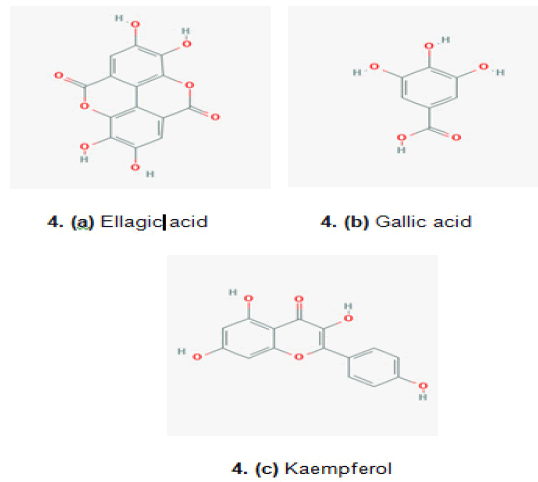
Figure 4: Structures of bioactive compounds obtained from Amla.
Amla as an antineoplastic agent: The antiproliferative action of amla extract in the human tumor cell lines of different histological origins like human erythromyeloid K562, B-lymphoid Raji, T-lymphoid Jurkat, MCF7, and MDA-MB-231 breast cancer cell lines was observed to be very functional. A concentration-dependent cytotoxic effect on L 929 cells in vitro and apoptosis in Dalton’s lymphoma ascites and CeHa cell lines was also seen upon administration of its aqueous extract. Ngamkitidechakul and group reported that its aqueous extract was responsible for inhibition of the growth of various cancer cell lines in the lungs, liver, breast, ovaries, and colon.
The most important difference between normal cells and cancer cells is the loss of differentiation, unlimited replicative ability, increased invasiveness, and metastasis. Constituents of amla show metastasis prevention and its aqueous extract are effective in preventing the MDAMB-231 cell invasion in the in-vitro matrigel invasion assay. Kaempferol, an amla bioactive, has been reported to inhibit stromelysin 1 (MMP-3) expression in the MDA-MB-231 breast cancer cell line. Gallic acid, a polyphenol is also reported to show inhibitory effects on gastric adenocarcinoma cell migration, and metastasis of P815 mastocytoma cells to the liver of DBA/2 mice [10]
Tomato (Solanum lycopersicum) is a widely used vegetable all over the world and its numerous health benefits make it a significant part of the human diet. It is of the solanaceae family. The plants bear small to large round fruits which are green when young but turn red on ripening.
Tomato fruit is an excellent reserve of carotenoids including lycopene, -carotene, and lutein; Lycopene being an effective antioxidant and possessing anti-tumor properties is considered the main bioactive compound of tomato. Along with fibers, Vitamins C and E, flavonoids, sterols, and phenolics are some bioactive compounds of tomatoes that lead to a decrease in the risk of cancer development. Phenolics, which are present in variable amounts in different tomato varieties, prevent cellular damage as well as cancer cell proliferation by showing antioxidant activity. Caeic acid, chlorogenic acid, ferulic acid, rosmarinic acid, quercetin, and naringenin were the most abundant compounds, Although sterols are present in lower amounts in tomatoes, they are one of the major compounds along with -sitosterol, stigmasterol, and campesterol
Lycopene is a water-insoluble pigment responsible for the red color of tomatoes. It has a long-chain structure with dienes and the higher number of conjugated double bonds in it is what makes it a strong singlet oxygen quencher hence, according to the data from some reports effectiveness of lycopene and its antioxidant activity are 10 times higher than vitamin E. Data from various types of research have shown that there exists a protective relationship between tomato intake and cancer risk. Accelerated apoptosis of cancer cells and an improvement in prostate-specific antigen concentration were some of the positive results that administration of lycopene yielded (Figure 5)

Figure 5: Structure of lycopene, bioactive obtained from Tomato.
Effects of lycopene, bioactive obtained from tomato on various types of cancers:
Prostate cancer: Studies have shown a significantly effective association between prostate cancer, lycopene, and tomato intake. However, very few case-control studies support this association. Only 4 studies of 13 case-control studies found statistically significant negative odds ratios concerning tomato or lycopene exposure. The evidence is strongest in the cohort studies. Giovannucci et al. reported that lycopene intake lowers the risk of prostate cancer in U.S. men. Risk of developing prostate cancer was seen to be reduced by 35% in men who consumed tomato sauce and other tomato products per week when compared to men who never ate tomato products.
Other cancer sites: The evidence for a protective effect of tomato product consumption is equivocal for cancer sites other than the prostate. In some research studies, it was found that tomato intake did not show a huge change in the breast cancer risk however in the majority of the studies a statistically significant reduction in pancreatic cancer was seen. Of various studies exploring stomach cancer, more than half of the cases showed risk reductions. It was seen that there was a high occurrence of stomach cancer in the regions where tomato consumption was low. Therefore, low tomato or lycopene intake by the population in some of these studies may have shadowed any beneficial effect. In the studies exploring the link between lycopene intake and colorectal cancers, it was found that half of the studies indicated a reduced risk while the other half indicated no such association, whatsoever [11].
Usually called the Holy Basil in English or Tulsi in almost every Indian language, Ocimum sanctum L. is usually found in Southeast Asia. Tulsi is of the family Labiatae and is an aromatic herb. Tulsi has been used in the treatment of a variety of ailments like rhinitis, bronchitis, skin infections, stomach disorders, inflammation, urinary tract infections, and headaches. Data show that the Tulsi extracts and its oil have various properties like anti-inflammatory, immune-modulatory, analgesic, antipyretic, antidiabetic, hepatoprotective, hypolipidemic, and anti-stress activities
It is reported that the Tulsi leaf contains about 71% eugenol and 20% methyl eugenol which constitute 0.7% of the volatile oils which also contain carvacrol and sesquiterpine hydrocarbon caryophyllene. The stems and young leaves of Tulsi contain compounds of phenol like apigenin, circimaritin, cirsilineol, isothymusin, and rosmeric acid, and significant amounts of eugenol along with apigenin-7-O-glucuronide, luteolin-7-O glucuronide, orientin, ursolic acid, vicenin and a multitude of sesquiterpenes and monoterpenes like myrtenal, campesterol, stigmasterol, etc. It has also been seen that Tulsi along with some of its components like eugenol, apigenin, rosmarinic acid, myretenal, luteolin, and carnosic acid help in preventing breast, skin, liver, oral, and lung cancers, induced by chemicals, by causing a substantial increase in the antioxidant activity, inducing apoptosis, causing alteration in the gene expressions, restraining metastasis and angiogenesis (Figure 6).
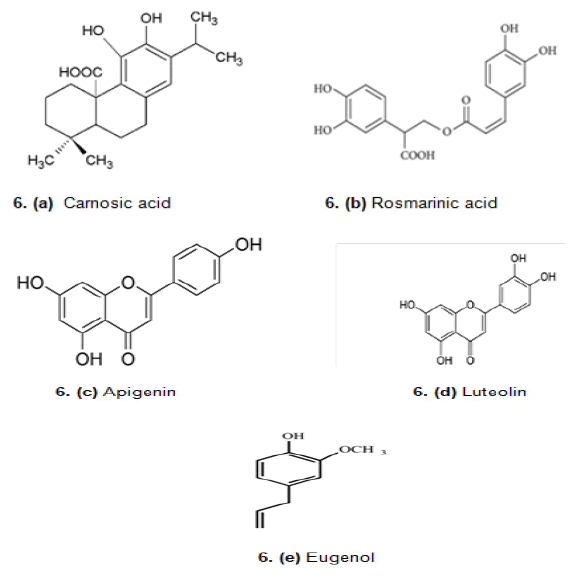
Figure 6: Structures of bioactive compounds obtained from Tulsi extracts.
Effects of tulsi extracts on different types of cancers:
Tulsi in lung cancer: Ethanolic extract of Tulsi has been found to induce apoptosis in the human A549 lung cancer cells; in addition, it suppresses the growth of Lewis lung carcinoma cells onto C57BL/6 mice. Treating A549 cells with Tulsi extract has been found to have caused concentrationdependent cytotoxicity along with increased apoptosis. Tulsi (50 mg/kg and 100 mg/kg) has been found to cause a dose-dependent inhibition in the growth of tumor along with lessening the weight and size of the tumor at necropsy in the studies conducted with Lewis lung carcinoma- bearing animals
Studies have also affirmed the have shown results that consumption of Tulsi extract caused a substantial reduction in tumorigenesis by inhibiting nodule formation and decreasing the lung weight in the mice that are injected with the Lewis lung carcinoma cells. Data from cell culture studies also confirm the findings that carnosic acid, as well as rosmarinic acid, are capable of hindering the growth of NCI-H82. It was also seen that luteolin has the characteristic of inducing G2 phase cell cycle arrest, suppressing the migration in A549 cells, and apoptosis [12].
Tulsi in breast cancer: Tulsi extract averted the migration of breastcancer cells (MDA-MB-435) toward matrigel, and the human umbilical vein endothelial cells toward galectin-3, as has been found in various cell cultures study reports. Tulsi extract effectively inhibited the TPAinduced rise in the levels of COX-2 as seen in MDA-MB-231 cell studies. A reduction in angiogenesis in the matrigel plug assay and inhibition of the capillary tube formation was also reported. Altogether, this suggests that the extract of Tulsi shows anti-angiogenic and anti-tumorigenic effects. Apigenin, a flavonoid, hinders cell growth and causes apoptosis in SKBR-3, MCF-7, and MDA-MB-453 breast cancer cells. Detailed studies with MDA-MB-453 also show the impediment of invasion as well as migration, and proliferation by apigenin.
Tulsi prevents liver carcinogenesis: It has been found in vitro studies with the primary hepatocytes from rats that the pretreatment of Tulsi leaves with ethanolic extract (20 μg/ml to 500 μg/ml) prior to DMBA (7, 12-dimethylbenz[a]anthracene) exposure (10 μg or 50 μg) caused a significant decrease in the levels of DMBA–DNA adducts, predominantly at a lower dose. Administering doses of Tulsi significantly averted 3-MeDABinduced hepatomas as shown in vivo studies with rats. Data proves that Tulsi mediated its safeguarding effects by causing a significant decrease in the levels of phase I enzymes, lipid and protein oxidation, and collaterally enhanced the levels of the antioxidants and phase II enzymes. Data from various studies have also shown the effectiveness of apigenin in the prevention of hepatic carcinogenesis in rats caused by NDEA (N-Nitrosodimethylamine) and reduction in oxidative stress [13]. Administration of apigenin to Huh7 cells also causes apoptosis in a concentration-dependent manner along with inhibiting cell proliferation.
Tulsi prevents gastric carcinogenesis: Data from studies shows that the inclusion of Tulsi leaves in day-to-day diet restricted B(a) P-induced(benzo(a)pyrene) fore-stomach carcinogenesis to a great extent in mice. Selective administration Tulsi caused apoptosis in MNNG-treated (methylnitronitrosoguanidine) gastric carcinomas but didn’t induce it in the normal stomach tissue. Mediation of the protective effects was seen by a significant decrease in the levels of VEGF (Vascular Endothelial Growth Factor), PCNA (Proliferating Cell Nuclear Antigen), GST-pi (Glutathione-S Transferase-Pi), and antiapoptotic protein Bcl-2 with a simultaneous increase in the pro-apoptotic proteins Bax, cytochrome C and caspase 3. Eugenol was seen to have functional results against B(a)P-induced fore stomach tumors in mice and MNNG-induced gastric carcinogenesis in rats along with inhibition of NF-κB activation. The expression of NF-κB target genes promoting or inhibiting cell proliferation and cell survival was also found to be altered by eugenol. Eugenol administration modulated various target molecules via the mitochondrial pathway to enhance apoptosis and to inhibit invasion and angiogenesis. Cell culture studies have also reported that luteolin activates various mechanisms that cause cell death
Tulsi prevents oral carcinogenesis: The anti-neoplastic outcomes of Tulsi paste, aqueous extract, and ethanolic extract against the DMBAinduced hamster buccal pouch carcinogenesis was investigated by Karthikeyan et al. Administering Tulsi extracts orally along with the topical application of the leaf paste caused a decrease in the incidence of papillomas and squamous cell carcinomas. Further, phytochemical studies have reflected on results that show the chemopreventive effects that apigenin possesses against the DMBA-induced oral carcinogenesis in buccal pouches of golden Syrian hamsters. Treatment with luteolin in vitro studies cultured with SCC-4 cells have resulted in reduction in the viability and induction of apoptosis by causing a decrease in the expression of CDKs, cyclins and Phosphor-Retinoblastoma (p-Rb) anti-apoptotic protein but caused an increase in the expression of proapoptotic proteins and activated caspase 9 and caspase 3. Studies have also reflected results on the effects of both rosmarinic acid and carnosic acid in hindering DMBAinduced oral carcinogenesis in hamsters.
Originally used as medicine, tea has been one of the most widely consumed beverages worldwide. Tea is produced from the leaves of the plant Camellia sinensis and is categorized into three types—green, black, and oolong—based on the different leaf processing methods. In order to produce green tea the leaves are dried up and then steamed to prevent fermentation.
Substantial research has been conducted on it owing to its health benefits. Its main constituents are polyphenols, including flavonoids and catechins. Green tea has high quantities of Green Tea Catechins (GTCs) with respect to other types of tea. The vital catechins in green tea are (−)-Epigallocatechin-3-Gallate (EGCG), (−)-Epicatechin-3-Gallate (ECG), (−)-Epigallocatechin (EGC), and (−)-Epicatechin (EC). EGCG is the most abundant one being approximately 70% of the entire catechin constituent (Figure 7).
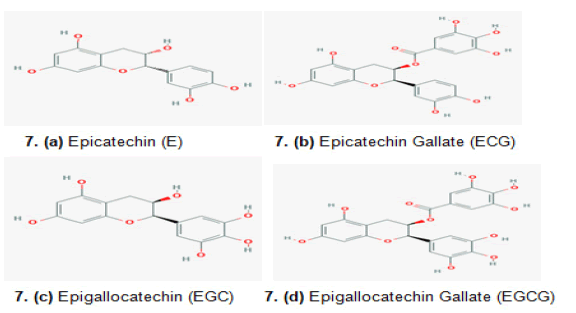
Figure 7: Structures of bioactive compounds obtained from green tea.
Green tea and oral cancer: In the first clinical trial of green tea where it was used for oral premalignant lesions, the observation indicated that application of tea extracts directly to the lesions might aid in the improvement of the local concentrations of the active components. A significant reduction in the content and total volume of the silver-stained nucleolar organizer regions and the proliferation of cell nuclear antigen in oral mucosa of the treated group compared to the control group were shown by the pathological result [16].
Effects of green tea on mechanisms of carcinogenesis:
Induction of apoptosis and cell cycle arrest: Studies have shown the results that under EGCG treatment, induction of apoptosis via generation of ROS and caspase-3 and caspase-9 activations was seen which led to a cell-cycle arrest at G1 phase. EGCG treatment caused an increase in the time proportion of G1 phase along with a decrease in cyclin D1 protein levels was seen. Meanwhile, there was an increase in p21CIP1 and p27KIP1 protein levels in human Head and Neck Squamous Carcinoma (HNSCC) cell lines. Administration of either EGCG or PolyE was found to cause an increase in the ratio of cells in the G1 phase, induction of apoptosis in a human colon cancer cell, lowering of cyclin D1 and Bcl-xL protein levels and raising caspase-3 and caspase-9 activities [14].
Inhibition of nk-κb and ap-1: Nuclear factor-κB (NF-κB), a transcriptional factor, is found to have an indispensable role in the inhibition of apoptosis, causing carcinogenesis. Earlier, examinations have demonstrated that EGCG treatment has been found to inhibit NFκB activation in human HNSCC, breast cancer, and lung cancer cells. Translocation into the nucleus after activation of NF-κB leads to a diversified gene expression related to neoplasia and tumour progression along with cellular alteration, proliferation, metastasis, inflammation, radio- and chemo-resistance. EGCG leads to inhibition of NF-κB activity and its nuclear translocation in human colon cancer and epidermoid carcinoma cells
Immune system modulation: The function of the immune system is to fight the abnormal agents and conditions in the body in order to prevent various diseases, including cancer. Studies have shown that green tea improves humoral and cell-mediated immunity which further results in a dwindled risk of several types of cancers. Inflammation is a major immune system response but frequently occurring unsuitable inflammation causes a number of ailments. EGCG has shown a strong anti-inflammatory effect along with substantial curative potential; in vivo studies have also indicated that green tea polyphenols treatment have resulted in significant decrease in inflammation. One study has reported results that administering these polyphenols reduces the level of Tumor Necrosis Factor (TNF) affected by lipopolysaccharide. Similarly, another study has shown that administering EGCG and PolyE led to a decrease in the measure of several inflammatory cytokines, including TNF, in the colorectal epithelium in a mouse colorectal cancer model [15].
Green tea and oral cancer: In the first clinical trial of green tea where it was used for oral premalignant lesions, the observation indicated that application of tea extracts directly to the lesions might aid in the improvement of the local concentrations of the active components. A significant reduction in the content and total volume of the silver-stained nucleolar organizer regions and the proliferation of cell nuclear antigen in oral mucosa of the treated group compared to the control group were shown by the pathological result [16].
Another study has demonstrated positive results, where administering tea extracts to patients with a high risk of oral premalignant lesions showed a decrease of stromal VEGF and cyclin D1 in lesions of clinically receptive patients (GTE patients) and increase in non-receptive patients. The data reflected GTE reducing oral premalignant lesions by blocking angiogenesis stimuli; it also supported using GTE in the chemoprevention of oral premalignant lesions along with using relevant biomarkers in clinical trials in order to monitor the response and reactivity.
Pomegranate (Punica granatum L.), belonging to the family Lythraceae is a rounded berry with about 250 white–1500 white, when raw and deep red and/or purple, when ripe, seeds. The edible seeds, due to the presence tannins and anthocyanins, show antioxidant and antiinflammatory properties. Pomegranate has been used as a medicine for a number of ailments since remote ages. It can be used to treat diarrhoea and ulcers and also as an antiparasitic agent. Another traditional system of medicine, the Unani system of medicine, has even recognized for its use in the treatment of diabetes [17]. Not only the fruits but the bark, leaves, roots, and other parts are also known to have a high amount of molecular constituents with therapeutic properties. There are a number of studies that clearly elucidate the benefits of pomegranate against cancer. The bioactive compound in it is known to influence multiple signaling pathways that are involved in inflammation, initiation of tumorigenesis, hyperproliferation, cellular transformation, angiogenesis, and eventually metastasis. Bioactive constituents of pomegranate were reported to modulate various transcription factors, pro and anti-apoptotic, molecules regulating cell cycle, protein kinases, cell adhesion molecules, proinflammatory mediators, and growth factors (Figure 8).
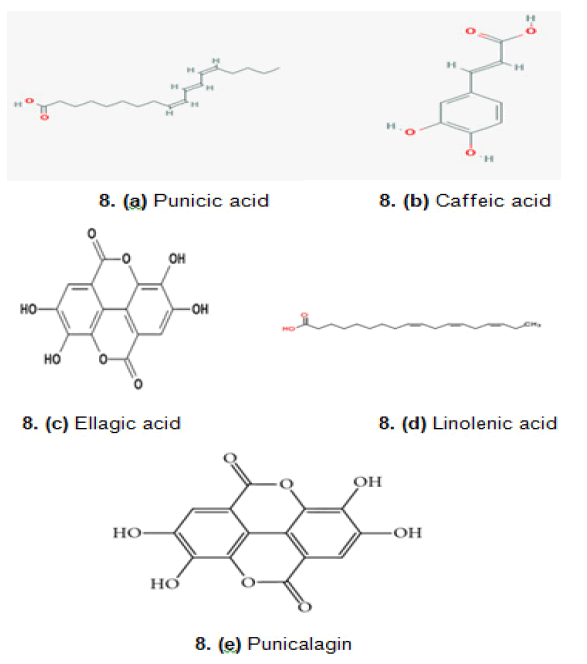
Figure 8: Structures of bioactive compounds obtained from pomegranate
Effects of bioactive compounds obtained from pomegranate on various types of cancers:
Skin cancer: Of all the types of cancer, skin cancer is mostly developed by sun exposure. Ultraviolet B (UVB) radiation leads to the stimulation of various signalling pathways in the skin and thus, is a strong risk factor for skin cancer. Pomegranate Fruit Extract (PFE), Pomegranate Juice (PJ), and Pomegranate Seed Oil (PSO) are all known to have the potential for preventing UVB-induced skin cancer. They all have been tested in cell culture, reconstituted human skin models, and animal models related to skin cancer. PFE was shown to seize the phosphorylation of the Mitogen-Activated Protein Kinases (MAPK) in Normal Human Epidermal Keratinocytes (NHEK) caused by UVB. Inhibition of epidermal hyperplasia of epidermal cells and leukocyte infiltration was seen by oral administration of PFE along with attenuation of UVB-induced activation of various pathways related to inflammation and proliferation.
Breast cancer: It was reported that Polyphenols from PJ, pericarp, and PSO restricted the conversion of androgen to estrogen by inhibiting
Figure 8. Structures of bioactive compounds obtained from pomegranate.
aromatase activity and hence play an important role in breast cancer. Along with their anti-estrogenic effects, these polyphenols were also known to show an inhibitory effect against the growth of cell lines MCF-7 and MB-MDA-231. Another study concluded that ellagitannins derivatives from pomegranate show anti-proliferative activities in breast cancer cells. Studies have revealed that PFE and its components are of utmost importance because of their pro-apoptotic and antioxidant properties forming a base for chemoprevention against breast cancer. Punicic acid, found in PSO was also found to induce apoptosis in both estrogens sensitive as well as insensitive breast cancer cell lines, namely MDAMB-231 and MDA-ER-7 cells, and inhibit their growth.
Prostate cancer: Pomegranate is also beneficial against PCa in cell culture. Lansky et al reported that the acids such as ellagic acid, caffeic acid, luteolin, and punicic acid which are found in sufficient amounts in PSO, PJ and peels of the pomegranate fruit are known to lower the metastatic ability of PC-3 cells. On administration of polyphenols obtained from pomegranate pericarp and PJ along with PSO to human PCa cells, it was seen that there was increased apoptosis, increased cells in G2/M phase, reduced cell proliferation and tumor growth in PCa cells [18]. By targeting various signaling pathways, PFE was reported to induce apoptosis and reduce proliferation in PCa cells. The incidence of adenocarcinoma in the lateral prostate was reduced when PJ was orally administered to transgenic rats. Ellagic acid also gave similar results. By activating caspase 3-mediated apoptosis PJ as well as ellagic acid inhibited prostate cancer
Colon cancer: Pomegranates show beneficial effects against colon cancer as data show that PJ plays a vital role in down-regulating many inflammatory signaling pathways in colon cancer cells. Seeram et al. revealed that PJ shows higher anti-proliferative and pro-apoptotic effects on human colon cancer cell lines (HT-29, HCT116) as compared to its purified polyphenols. They suggested that extracting discrete polyphenols from PJ may reduce the inclusive anti-proliferative activity since all the polyphenols together exhibit synergy and show multifactorial effects. Data suggest that the anti-carcinogenic effects of ellagitannins isolated from pomegranate extracts could mainly be due to the presence of ellagic acid, which shows apoptotic activity in colon cancer cells. Diets consisting of PSO, rich in linolenic acid, were found to noticeably check the development of colon adenocarcinomas in male F344 rats. Also, consumption of PSO decreased the risk of colonic carcinoma multiplicity in the colon of rats.
Spices, widely used as condiments since time immemorial due to their specific flavor, taste, and color have been used for treating various ailments in folk medicine. Their curative properties are because of the bioactive compounds present in them and thus possess a lot of health benefits. The antioxidant, anti-inflammatory, and immunomodulatory effects of spices have been cited in many studies. Therefore, spices could be used to prevent and treat cancers, because oxidative stress, inflammatory stress [19], and immune response have been reported as some of the causes of genesis and metastasis of cancer. Some evidence has reported that certain spices might even lower the risks of some cancers.
Curcuma longa
Turmeric, Curcuma longa Linn, is a rhizome that has been often mentioned in ancient medicinal texts of Ayurveda in addition to traditional Chinese medicine and is known to be beneficial in the treatment of a range of human disorders like asthma, allergy, anorexia, cough, sinusitis, and hepatic disease. Turmeric powder is yellow-pigmented and its chemical composition consists of curcuminoids that include curcumin which is a polyphenol (1,7-bis(4-hydroxy-3-methoxyphenyl)-1,6heptadiene3,5-dione), demethoxycurcumin, and bisdemet oxycurcumin. There are many accounts of its anti-infectious, anti-oxidant, anti-inflammatory, hepatoprotective, cardioprotective, thrombosuppressive, anti-arthritic, chemopreventive, and anti-carcinogenic properties. It inhibits cell proliferation, induces apoptosis, retards, and checks the tumor growth and invasion of cancers by downregulating various cellular signalling pathways. Curcumin regulates various molecular targets like cytokines, chemokines, Reactive Oxygen Species (ROS), intracellular signalling pathway mediators, and transcription factors thereby, inhibiting cancer initiation and progression. Studies have also reported that curcumin inhibits the growth of many types of tumour cells (Figure 9).
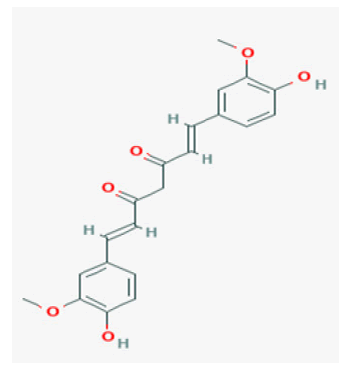
Figure 9: Structure of Curcumin, a bioactive obtained from Turmeric.
Pancreatic Cancer: In phase II clinical of pancreatic cancer patients, it was reported that the disease was maintained stably without further metastasis and data also showed small but significant tumour regression in one patient along with a hike in cytokine levels. Even though oral curcumin administration was safe, its activity is seen only in a few patients due to its poor bioavailability
Breast Cancer: In order to assess the feasibility and tolerability of curcumin with docetaxel, Bayet- Robert et al conducted an open-label phase I clinical trial. It was reported that curcumin helped inhibit breast cancer by regulating apoptosis, genes related to the cell cycle, microRNA in breast cancer cells, modulating carcinogenesis of the breast, and inhibiting the proliferation of BCSC (Breast Cancer Stem Cells)
Colorectal cancer: Pre-treatment as well as post-treatment of colorectal cancer cells with thymoquinone reported the reversal of oxidative stress induced by 1, 2-Dimethyl-Hydrazine (DMH) at the initiation. In another study, thymoquinone reduced tumour development in ApcMin mice (multiple intestinal neoplasias). It acted by causing apoptosis of tumour cells and regulating Wnt signalling indicating the beneficial use of Nigella sativa oil (or thymoquinone) as adjuvants in chemotherapies
Breast Cancer: In order to assess the feasibility and tolerability of curcumin with docetaxel, Bayet- Robert et al conducted an open-label phase I clinical trial. It was reported that curcumin helped inhibit breast cancer by regulating apoptosis, genes related to the cell cycle, microRNA in breast cancer cells, modulating carcinogenesis of the breast, and inhibiting the proliferation of BCSC (Breast Cancer Stem Cells)
Colon Cancer: It has been found that various purified natural products along with their derivatives show different pharmacological activities, enabling them to be potent drugs for adjuvant therapy. Clinical studies have shown that curcumin possesses anticancer and antiangiogenic activities. Apoptosis induction and cancer growth inhibition in a diversity of cultured tumor tissue in vitro has been one of its anticancer activities. Moreover, curcumin has shown the ability to avert tumorigenesis in vivo. Curcumin also shows effects on adhesion molecules, transcription factors, growth regulators, cellular signalling molecules as well as angiogenesis regulators [20]
Zingiber officinale
Ginger(Zingiber officinale), belonging to the Zingiberaceae family, is used around the globe, especially in most of Asian countries, and contains more than 400 chemical compounds. The major constituents in ginger rhizomes includes carbohydrates (50%–70%), lipids (3%–8%), terpenes, and phenolic compound. Terpene components of ginger, responsible for its aromatic odour, include zingiberene, -bisabolene, -farnesene, -sesquiphellandrene, and -curcumene, while phenolic compounds include gingerol, paradols, and shogaol. These gingerols (23%–25%) and shogaol (18%–25%) are found in higher quantities than others and are responsible for their pungency. Besides these, amino acids, raw fiber, ash, protein, phytosterols, vitamins (e.g., nicotinic acid and vitamin A), and minerals are also present.
Ginger acts on the gastrointestinal system to prevent nausea from occuring due to chemotherapy, motion sickness, morning sickness, or surgery. It is also useful I the treatment of other GI problems like upset stomach, gas, bloating, heartburn, flatulence, diarrhea, loss of appetite, and dyspepsia (discomfort after eating). According to Ayurveda, ginger is known to enhance the digestive process. Apart from these benefits, it has been reported as a pain relief for arthritis, muscle soreness, chest pain, low back pain, stomach pain, and menstrual pain. It can also be used for treating upper respiratory tract infections, cough, and bronchitis. Due to its property of anti-inflammation, it is even recommended for joint problems. Fresh juice of ginger has been shown to treat skin burns. The active component of ginger is used as a laxative and antacid medication. It is also used to warm the body for boosting circulation and lowering high blood pressure. Because of its warming effect, ginger acts as antiviral for treatment of cold and flu (Figure 10).
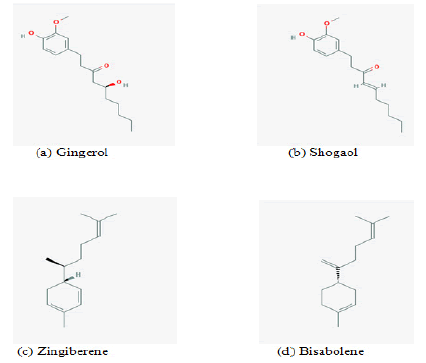
Figure 10: Structure of bioactive compounds obtained from ginger.
Effects of ginger on gastrointestinal cancer:
Evidences suggest that ginger and its active constituents suppress the growth and induce apoptosis of a variety of cancer types including oral, gastric, pancreatic, liver, and colon cancer. Its neoplastic properties could be associated with various effects including antioxidant, antiinflammatory, and anti-mutagenic properties.
Gastric cancer: Preclinical studies elucidate that ginger extract and its elements possess chemopreventive and antineoplastic properties in case of gastric cancer. Studies have revealed that 6-gingerol can effectively cause apoptosis of gastric cancer cells. Other than that, 6-shogaol also reduces the potentiality of gastric cancer cells by damaging their microtubule structure. It was seen that ginger extract significantly reduced the gastric ulcer area of acetic acid-induced ulcers when administered to Sprague-Dawley rats.
Pancreatic cancer: 6-gingerol arrests the cell cycle at G1 phase and hence inhibits the growth of pancreatic cancer HPAC and BxPC-3 cells as reported by Park et al. Another study revealed that 6-gingerol modulates proteins of the tight junctions and inhibits invasion and metastasis of pancreatic cancer cells. These functions of 6gingerol were mediated through NF-ðÂÂ?½Binhibition via inhibition of the Extracellular Signal-Regulated Kinases (ERK) pathway. Ca2+ signals in the ðÂÂ?½-cells of islets of Langerhans are triggered by 6-shogaol by initiating the TRPV1 channels leading to apoptosis of the cancer cells.
Liver cancer: Studies have reported that 6-shogaol, via an oxidative stress-mediated caspase-dependent pathway, induces apoptosis in Mahlavu hepatoma cells. Glutathione (GSH) expenditure is an important contributing factor in judging apoptosis of Mahlavu cells under 6-shogaol administration. Recently Jeena et al. showed that administration of ginger oil resulted in a significant lowering of inflammation caused by carrageen and dextran and formalin, indicating its character in liver carcinogenesis prevention
Nigella sativa
Nigella sativa L., commonly known as black cumin, is an annual herb and has been used since the days of ancient Egypt. It is grown in countries around the Mediterranean Sea and India, and has been used as a natural medicine in treating conditions like fever, gastric and intestinal disorders as well as cancer. Thymoquinone is the main bioactive compound present in the seeds of black cumin which has been shown to possess antineoplastic activity (Figure 11)
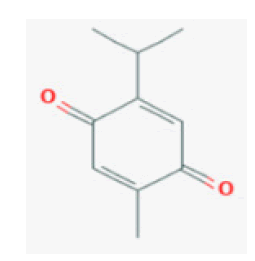
Figure 11: Structure of Thymoquinone, a bioactive obtained from black cumin.
Effects of bioactive compounds obtained from black cumin on various types of cancers
Lung cancer: The seed extracts of Nigella sativa significantly reduced the viability of lung cancer cells and changed their cellular morphology in a concentration-dependent manner. Also, thymoquinone played a vital role in checking the proliferation and metastasis of A549 lung cancer cells, cell nuclear antigen and cyclin D1 by ERK-1/2 pathway
Pancreatic cancer: Apoptosis of cancer cells in the pancreas was enhanced and tumor growth was checked by thymoquinone when administered alongside gemcitabine. The combination treatment synergistically reduced anti-apoptotic factors and increased the activity of caspase-3 and caspase-9 pro-apoptotic molecules.
Colorectal cancer: Pre-treatment as well as post-treatment of colorectal cancer cells with thymoquinone reported the reversal of oxidative stress induced by 1, 2-Dimethyl-Hydrazine (DMH) at the initiation. In another study, thymoquinone reduced tumour development in ApcMin mice (multiple intestinal neoplasias). It acted by causing apoptosis of tumour cells and regulating Wnt signalling indicating the beneficial use of Nigella sativa oil (or thymoquinone) as adjuvants in chemotherapies
Crocus sativus Saffron is produced from stigmas of the Crocus sativus plant. In traditional medicine, it has been used as an herbal plant besides being used for coloring and flavoring food. Studies have shown that saffron possesses anti-neoplastic effects which can be a result of the bioactive compounds it contains, such as crocin and crocetin. The compounds are found to be in abundance in saffron, and they induce apoptosis and inhibit cell proliferation (Figure 12).
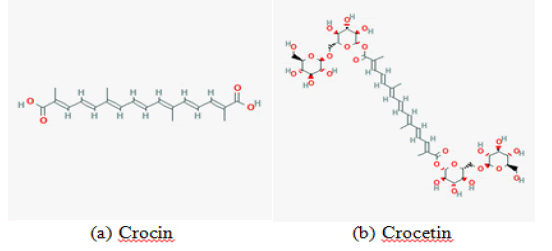
Figure 12: Structures of bioactive compounds obtained from Saffron.
Effects of bioactive compounds obtained from saffron on various types of cancers:
Lung cancer: The viability of human alveolar carcinoma cells was checked by the ethanolic extract of saffron. Hence the ethanolic extract could be a potent chemotherapeutic agent. It was further reported that aqueous extract of saffron showed cytotoxic activity in A549 cells by causing apoptosis and ceasing proliferation by activating caspasedependent pathways
Digestive system cancer: Crocetin-induced apoptosis in both human adenocarcinoma gastric cancer cells and a rat model of a gastric can. It also reversed the changes induced by 1-methyl-3-nitro-1-nitrosoguanidine in serum and showed antioxidant activity in cancer cells. Additionally, crocin induced a classical programmed cell death which was autophagyindependent in colon cancer cells.
Reproductive system cancer: Crocin reduced cell proliferation in PCa cell lines. With respect to crocin, crocetin possessed more potent antitumor effects, which were confirmed by reduction of N-cadherin and β-catenin expression and escalating expression of E-cadherin upon crocetin treatment of PCa cells. crocetin and crocin inhibited invasion and migration of PCa cells by reducing metalloproteinase and urokinase activity. Also, crocin could significantly inhibit the growth of ovarian cancer cells (HO-8910), arrest the cells in the G0/G1 phase, and cause cell death by activating caspase-3 regulated pathway [21].
Piper nigrum
Commonly used in folk medicine to treat stomach disorders, black pepper is the fruit of the Piper nigrum herb which also used as a spice. Piperine is its main alkaloid constituent that exerts antitumor activities in a variety of cancers (Figure 13).

Figure 13: Structure of Piperine, a bioactive obtained from black pepper.
Effects of Bioactives Obtained from Black Pepper on Various Types of Cancers:
Breast cancer: Piperine inhibits the proliferation of breast cancer cells and induces apoptosis by stimulating caspase-3. Piperine is a highly effective adjuvant as it enhances the potency of Tumor necrosis factorrelated therapies which induce apoptosis in triple-negative breast cancer cells and inhibits the growth of both triple-negative breast cancer cells and hormone-dependent breast cancer cells.
Prostate cancer: Piperine inhibited the proliferation of LNCaP, PC-3, 22RV1 and DU-145 PCa cells. Its administration significantly reduced both the androgen-dependent and androgen-independent tumor growth in mice models with prostate cancer cells. Moreover, piperine administration reduced the proliferation of cells, induced cell cycle arrest at G0/G1 phase, and advanced autophagy in LNCaP and PC-3 cells. Besides, a combination of piperine and docetaxel when administered to a human castrationresistant prostate cancer xenograft model synergistically improved the anti-tumor potential of docetaxel.
Colorectal cancer: Piperine exhibit a cytostatic effect by inhibited the metabolic activity of HRT-18 human rectal adenocarcinoma cells. It also inhibits cell cycle progression and induces apoptosis. Furthermore,piperine caused G1 phase cell cycle arrest hence inhibiting HT-29 colon carcinoma cell proliferation.
Syzygium aromaticum
Clove (Syzygium aromaticum) has been one of the most used spices in traditional Chinese medicine. It is a sun-dried unopened flower bud of the plant which is found to have antiseptic, antibacterial, antifungal, and anticancer properties. Eugenol has been a chief compound of clove besides oleanolic acid which contributes to its antineoplastic activity. It reduces ATP expenditure and oxidative stress. In addition, it has also been found to target the E2F1/survivin pathway and exert cancer-preventive properties in breast cancer both in vitro and in vivo. It also shows proapoptotic and anti-inflammatory properties in human cervical cancer cells and liver cancer cells. In the study of Dwivedi et al., out of water, ethanol, and oil extracts of clove, the oil extract has been found to have shown utmost cytotoxic activity. Cell growth was restrained by the oil extract in TE-13 esophageal cancer cell lines [22]. In addition to this, clove maybe a novel therapeutic herb that can be used for the treatment of colorectal cancer; oleanolic acid in ethyl acetate extract of cloves is responsible for its antitumor activity (Figure 14).
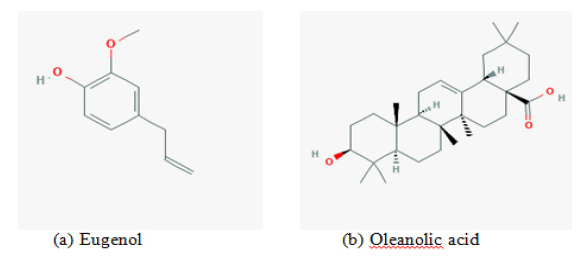
Figure 14: Structures of bioactive compounds obtained from clove.
Cinnamomum cassia
Cinnamon (Cinnamomum cassia) is an herb that is widely used as a spice and mentioned for its medicinal effects in Ayurveda. Cinnamaldehyde is the main bioactive component isolated from the stem bark of cinnamon and is found to have anticancer activity. For instance, the treatment of mice with cinnamaldehyde has resulted in a lessening of the volume of tumors and the number of new vessels in melanoma cells. Cinnamaldehyde also inhibited the expression of HIF-α and VEGF in melanoma [23]. Moreover, polyphenols obtained from cinnamon might exercise neuroprotective effects in C6 glioma cells. Also, cinnamaldehyde when combined with substances like 5-FU, and OXA, which are chemotherapeutic agents, showed a synergistic effect on cytotoxicity in colorectal carcinoma cell. In another study, 20-hydroxycinnamicaldehyde, a compound found in cinnamon, was a potent anticancer agent as a result of the direct targeting of the Pim-1 kinase. Aqueous extract of cinnamon showed apoptotic activity in the human myelocytic leukemia cell line [24](Figure 15)
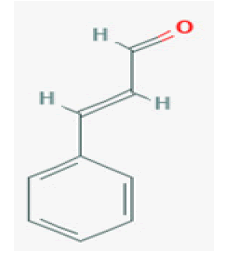
Figure 15: Structure of cinnamaldehyde, a bioactive obtained from cinnamon
The idea of disease prevention, as well as treatment, is becoming more significant as healthcare costs continue to rise. The interest in plant products and extracts for cancer cure and prevention has been escalating during the past few decades. Current epidemiological data and in vitro cell cultures point towards cancer chemoprevention by food components however clinical evidence suggested by intervention trials remains limited.
Links between dietary intake and disease prevention have been secured by a lot of epidemiological studies as the pharmacological aspects of a number of bioactive compounds identified in plants that have been used in traditional medicine have been surveyed. Conventional therapies in the treatment of cancer like chemotherapy, radiotherapy, and surgery could be done alongside co-adjuvant therapies in order to improve the prognosis and the standard of life of cancer patients, which has been shown by recent studies. Therefore, a major interest in evolving adjuvant chemotherapies in supplementing conventional treatment methods are blossoming, which may result in reduced side effects and toxicity without posing a danger to the therapeutic efficacy. An abundance of opportunities for drug discovery is provided by fruits, vegetables, and spices, common beverages, and herbs. With a broad and diverse range of pharmacological properties, they are rich sources of micro chemicals with the potential to prevent several types of cancer. In the current scenario, acquired knowledge in the domain of nutritional science has shown that in plant products the mechanism of action for vitamins and minerals isn’t only antioxidant activity. Fruits like pomegranate and amla have been known to show antineoplastic, chemo modulatory, and chemopreventive effects. Numerous mechanisms are accountable for these effects, the most significant ones are the apoptotic induction of neoplastic and preneoplastic cells, free radical scavenging, antimutagenic, antioxidant, antiinflammatory activities, and immunomodulatory effects. The whole pomegranate fruit along with its juice and oil have been substantial chemopreventive as well as chemotherapeutic agents, as they exert antiproliferative and anti-neoplastic effects by moderating many signaling pathways as suggested by various studies. Tomatoes are also known to show chemopreventive effects as lycopene, a bioactive compound in tomatoes shows a great deal of anti-tumorigenic activities in prostatic cancer cells and cancers of the digestive tract. Hence, they can be used in adjuvant therapies to treat breast, lung, skin, prostate, colon cancers. Vegetables like bitter melon and moringa have also shown a range of antitumorigenic and chemopreventive properties. Various herbal products (capsules and tablets) that are made available in the market today have concentrated fruit or seed extracts of bitter melon. Momordica charantia preparations are being widely available worldwide and are suggested by practitioners of natural health to treat diabetes and viral diseases. It serves various purposes like lowering blood sugar, being antiinfective, and delaying complications (nephropathy, neuropathy, gastroparesis and cataract, atherosclerosis) in diabetic patients and hence has paramount importance. It has been used in the treatment of prostate cancer by G1 phase arrest of cell cycle progression hence inhibiting cell proliferation or inducing cell death. One of the protective mechanisms against cancer progression is induction of apoptosis since acquired resistance toward apoptosis is a characteristic of most and perhaps all cancers. Bitter melon leaf extract is known to induce apoptosis in androgen-sensitive cells thereby, proving their anti-tumorigenic properties. Similarly, a greater range of medicinal and therapeutic properties have been seen in M. oleifera extracts. It has shown noteworthy antiinflammatory activity, inhibiting the activation signalling pathways like that of NF-κB and PI3K/Akt, scavenging free radicals and reducing oxidative stress, and enhancing neuroprotective roles. It also lessens the risk of cancer and modulates blood glucose. Therefore, M. oleifera can form an arena in order to prevent or treat a series of chronic diseases. Its leaf extract has a wide range of antiproliferative effects in different cancer cells. Plant products of the genus Allium also show numerous pharmacological properties including anti-tumorigenic properties. Epidemiological studies have shown that Allium vegetable consumption had protective effects against various types of cancers and particularly the ones of the gastrointestinal tracts. Besides amino acids, vitamins, and micronutrients, Garlic contains several different organosulfur compounds. Its anticancer property may be attributed to particular organosulfur compounds like Diallylsulfide, for example, which is the reason behind its strong taste and odor and has been responsible for selectively inhibiting as well as inducing certain P-450 enzymes which are responsible for activation of various procarcinogens along with activation or inactivation of anticancer drugs. The anticarcinogenic action of onions may also be related to their high content of organosulfur compounds or to their high antioxidant activity, which is mainly due to their vast flavonoid content. However, there are remarkable differences in the composition, concentration, and helpful activities of these bioactive compounds. Constituents with the oral and gut microbiota may pose as the factors that affect the relationship of Allium vegetables and cancer prevention. Green Tea is a beverage that has been found to show anti-cancer effects, particularly used in adjuvant therapy in oral cancers. The wide range of pharmacological properties shown by it is anti- as well as pro-oxidant activity, apoptosis induction along with inhibition of certain transcriptional factors. Various animal models and in vitro experiments have shown antineoplastic functions and the in-depth mechanisms of GTCs, particularly EGCG. EGCG along with EC has been known to show synergistic inhibition of growth and induction of apoptosis in various cells. Chemopreventive and radioprotective effects are also shown by Tulsi. Antioxidant, antimutagenic activities, free radical scavenging, antiinflammatory, increase in the levels of antioxidant enzymes, apoptosis of neoplastic cells, and immunomodulatory effects are some of the several effects that Tulsi extracts have shown in various studies. Tulsi has been a species with a vast aptitude for being non-toxic chemopreventive and radioprotective agents because of its abundance, safety in consumption, and low cost. A plethora of spices have been known to exert anticancer effects and their direct extract, isolated compounds, and essential oils are used in the treatment of lung, stomach, liver, breast, prostate, colorectum, and cervix cancers. Among the studied compounds, curcumin is the one that is exhaustively researched and shows highly beneficial effects in prevention and treatment of a diversified range of cancers. Thymoquinone has also received a great deal of attention. Gingerol and shogaol from ginger have shown anti-cancer properties, mainly by apoptosis when administered to gastric as well as liver cancer cells. Crocin and crocetin are bioactive compounds in saffron that have proven to possess anti-cancer properties and can be used in adjuvant therapy in cancers of the lung, prostate, digestive and reproductive systems. Piperine, an alkaloid obtained from black pepper has also been known to show antitumor activity in the prostate, breast, and colorectal cancer. Eugenol from clove exerted antiinflammatory and pro-apoptotic properties in human cervical cancer cells. It also showed anti-tumorigenic properties in oral squamous cell carcinoma cells. It acts as a therapeutic agent against digestive system cancers. Cinnamaldehyde, a bioactive compound in cinnamon has been known to show anticancer activity against various cancers. Its effects have been a significant reduction in the volume of tumors and a decrease in the number of new vessels in melanoma cells after administration. Some spices have shown their anticancer properties by apoptosis induction, DNA damage, and cell cycle arrest, inhibiting the formation of tumor cells and the metastatic process. Furthermore, regulating hormones and their receptors, including estrogen receptors and androgen receptor is how the anticancer properties of spices have been seen against breast and prostate cancer thereby making spices promising sources of adjuvant therapy. This study may help in understanding the association of healthy diets composed of fruits, vegetables, and spices with protection against initiation and progression of a wide range of cancers and how the bioactive compounds in phytoextracts may account for synergistic effects alongside conventional cancer treatment methods
The objective of this review was to provide the readers with an updated summary of the relationship between dietary intake and disease prevention which has been strengthened by numerous epidemiological studies. Along with conventional treatment methods, adjuvant therapies have proven useful in the successful treatment of cancer. It was to make the readers a better understanding of the basic mechanism of action of certain bioactive components in many phytoextracts in the prevention and cure of cancer. After successful summarization of different mechanisms and effects of phytoextracts on cancer cells, the author thereby concludes that dietary intake influences the body’s disease prevention ability and plays a significant role in cancer prevention and cure
Despite all the benefits listed; there are still a number of limitations that hinder the successful usage of phytoextracts for treating cancer. The major limitation is the lack of efficient pupils interested in exploring this area. Furthermore, the lack of clinically tested agents with an insufficient duration of intervention adds up to the problem. It is essential to understand that each individual reacts differently to a certain dose of medicine, so a large number of test-statistics are required before using these plant-based medicines for treatment. Only after the conduction of sufficient tests, one can define the dosage of these plant compounds. Since these phytoextracts are pleiotropic in nature, extensive studies are needed to better understand the interaction of these compounds with the body. Moreover, the exploration of probable plants with putative antineoplastic compounds is also required. Lack of a better understanding of the extraction process of the target compound and endemic occurrence of the plants also limits the use. The proinflammatory components of tumour microenvironment activate or inhibit the properties of the cancer cells. So, multidisciplinary approaches have been necessity and the explanation underlying the findings in many studies related to the inhibition of multiple targets can be attributed to the use of an extract rather than a purified compound, which further enhances the possibility of showing chemopreventive effects in humans
The authors declare that they have no conflicts of interest
Citation: Cite this article: Shweta Mishra*, Jagriti Agarwal, Sandhya Singh and Aparna Sarkar Bioactive Components Procured from Plant Extracts and their Roles in Cancer Prevention and Treatment: A Review. Eur J Clinic Oncol, 2022, 4(4), 42-52
Received: 25-Jul-2022, Manuscript No. ejco-22-70225; Editor assigned: 27-Jul-2022, Pre QC No. ejco-22-70225 (PQ); Reviewed: 08-Aug-2022, QC No. ejco-22-70225 (Q); Revised: 16-Aug-2022, Manuscript No. ejco-22-70225 (R); Published: 21-Aug-2022, DOI: 10.35248/clinical-oncology.22.4(4).42-52.
Copyright: ©2022 Mishra, S. This is an open-access article distributed under the terms of the Creative Commons Attribution License, which permits unrestricted use, distribution, and reproduction in any medium, provided the original author and source are credited.